Are you looking for a sustainable and efficient gardening method? Discover the remarkable benefits of hugelkultur, the mound gardening technique that's transforming gardens worldwide.
How to Design a Backyard Landscape for Relaxation and Entertaining
Designing a backyard landscape that caters to both relaxation and entertaining can transform your outdoor space into a versatile extension of your home.
Backyard Designs for Personal Relaxation
A well-designed backyard serves as a personal retreat, offering a sanctuary from the hustle and bustle of everyday life. It provides a space where you can unwind, read a book, play cricket with your family, or simply enjoy the tranquillity of nature. It can add significantly to your mental and physical well-being.
Backyard Designs for Social Entertaining
Your backyard can also function as a vibrant extension of your living space, perfect for hosting gatherings, parties, and casual outdoor meals. A well-planned layout, complete with seating areas and entertainment features, can accommodate guests comfortably while offering a refreshing change from indoor venues.
In this article, we’ll teach you everything you need to do to create your very own backyard oasis.
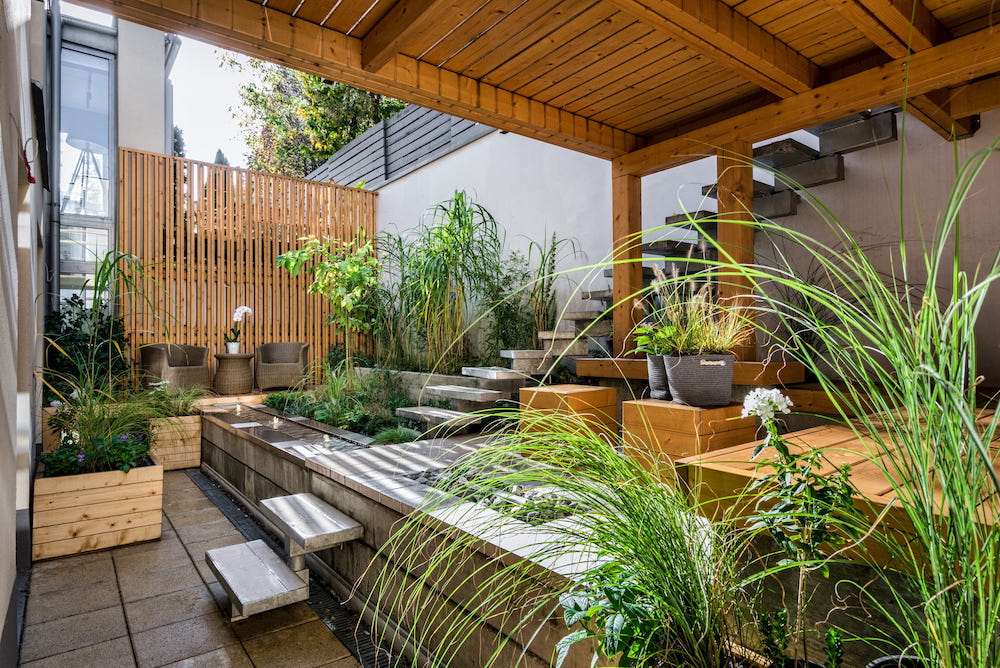
Features of a Relaxing and Entertaining Backyard
Comfortable Seating Areas
Creating inviting seating areas is a cornerstone of any relaxing and entertaining backyard. Consider your space, the number of people you typically host, and the activities you enjoy. Here are some ideas:
Lounge Chairs and Sun Decks: For sun-lovers, incorporate lounge chairs around your pool or in sun-drenched areas of your garden. They’re perfect for sunbathing, reading a book, or simply enjoying the outdoors.
Hammocks and Swing Chairs: For a touch of whimsy and relaxation, consider adding a hammock or swing chair. Nestled between two trees or standalone, these features create a perfect nook for afternoon naps or enjoying a good book.
Alfresco Dining Sets: If you plan on eating outdoors, you’ll need an alfresco dining set that can withstand weather conditions like sun, rain and wind. Choose weather-resistant furniture and consider a pergola or umbrella for shade during hot summer days.
Position your outdoor dining table and chairs somewhere comfortable, with a nice view. If it’s in a hot and sunny part of the garden, or it’s positioned between a boring brick wall and a bare fence, it’s unlikely to get used as much.
You can still create a chilled-out entertaining garden in small spaces using the principles we’re discussing in this article.
Outdoor Entertainment Features
Enhance the entertainment value of your backyard by incorporating features that provide a space for recreation and encourage interaction.
BBQ Areas and Outdoor Kitchens: For food lovers, an outdoor kitchen or BBQ area is a must. They allow you to cook while interacting with your guests, so you don’t have to be locked away in the house while everybody else is having fun.
Fire Pits and Outdoor Heaters: Fire pits, chimineas and outdoor heaters are great additions for cooler evenings. They provide warmth, create a cosy atmosphere and some types can even serve as a marshmallow roasting station!
Game Spaces: Consider adding a soccer goal net, a basketball hoop above a paving, or simply a turfed area for a friendly game of football or cricket. These features offer fun ways to engage guests of all ages.

Lighting for Evening Entertainment
A well-lit backyard can extend the hours you spend outdoors. Here are some ideas to incorporate lighting:
Accent Lighting: Use accent lighting to highlight your garden’s best features such as a beautiful tree, a water feature, or a walking path.
Ambient Lighting: Ambient lighting creates a warm and inviting atmosphere. Consider string lights, lanterns, or fire pits for a soft glow.
Safety Lighting: Ensure paths, steps, and changes in level are clearly visible with well-placed safety lighting, reducing the risk of trips and falls.
Incorporating Water Features
Water features can significantly enhance your backyard’s sense of tranquility.
Ponds: A pond, whether large or small, can serve as a focal point in your landscape. You can add fish or water plants for more interest and biodiversity. Or, you can install native wetland plants and encourage endemic frogs to take up residence.
Fountains: The soothing sound of flowing water from a fountain can enhance relaxation. Fountains come in various styles and sizes to suit any garden theme.
Choosing Plants for Outdoor Garden Designs
Now we get to the really good part! A backyard garden without plants isn’t much of a garden at all, so let’s discuss some of the considerations that will factor into your decision-making process when designing a backyard garden for relaxation and entertaining.
Choosing Plants for Relaxation
Plants play a significant role in creating a relaxing atmosphere. Certain plants, like lavender and chamomile, are known for their calming effects due to their soothing scents. Including these in your design can contribute to a peaceful and tranquil environment.
Smells aren’t the only sense you can incorporate in your backyard garden, either. Check out our article on gardening for all 5 senses to provide a place for you to rejuvenate after a long day at work:
Large trees take time to grow, but provide a shady spot to read a book or complete homework assignments. Think about the types of activities that you personally find relaxing, and how you can incorporate plants that will help you achieve your vision.
Choosing Plants for Entertainment Areas
According to a study titled “Influences of passive experiences with plants on individual well-being and health” by Ulrich and Parsons, there’s substantial evidence suggesting that individuals have greater enjoyment from being in outdoor spaces with plants compared to spaces without them.
You don’t need a bunch of academics to tell you that, though, do you? When you think about your favourite outdoor dining experiences, chances are that there were a few plants around. When choosing plants for entertainment areas, consider factors like their size, maintenance needs, and potential allergenic properties.
Opt for sturdy, low-maintenance plants such as westringia or callistemon (A.K.A bottlebrush) which can withstand high-traffic areas and require minimal upkeep.
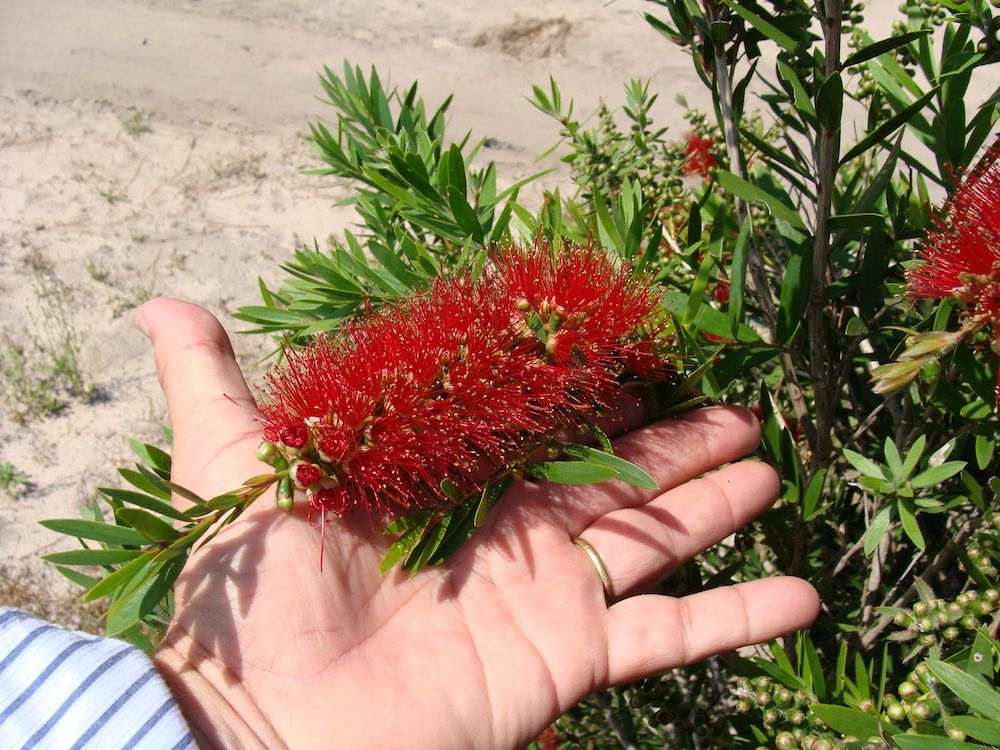
Using Plants to Define Spaces
Plants can play a pivotal role in creating distinct ‘rooms’ or defined spaces within your backyard. Whether you’re looking to create dining areas, play areas, or quiet retreats, the strategic placement of plants can help you achieve these goals.
For example, hedges can serve as natural walls that define and separate spaces, while trees can provide shade and privacy. Climbing plants, on the other hand, can be used to create verdant partitions or to soften the appearance of structures like pergolas or fences.
Seasonal Plant Choices for Year-Round Interest
To ensure your garden remains visually engaging throughout the year, it’s important to choose a mix of plants that offer seasonal interest. For instance, spring-blooming flowers like daffodils and tulips bring vibrant colours after a long winter, while trees with autumn foliage like maples provide a stunning display of reds and oranges.
In winter, plants with berries or evergreens can add much-needed colour and texture. Consider the hardy westringia, the colourful lilly pilly, and the versatile lomandra for year-round interest.
Incorporating Edible Plants
Including edible plants in your backyard design can not only provide fresh produce but also add visual appeal. Fruit trees such as apple and pear trees can offer spring blossoms and autumn fruits, while vegetable patches can provide a bounty of fresh produce during the summer months.
Herb gardens, on the other hand, can be both visually appealing and practical, providing fresh flavours for your kitchen or outdoor cooking. Some edible plants that are particularly useful or attractive in a backyard setting include tomatoes, basil, and strawberries.
Understanding the Advantages of Turf
Turf offers several benefits for sporting activities, including safety, comfort, and ease of maintenance. A well-maintained lawn provides a soft and safe surface for sports like football and cricket, reducing the risk of injuries.
Turf can withstand heavy foot traffic, making it an ideal choice for active backyards.
Turf Alternatives
If you’re considering turf alternatives, try Zen grass, which is known for its low-maintenance requirements and drought tolerance. Even though it’s a true grass, it doesn’t require regular mowing; a single mow once every year or two will get you through.
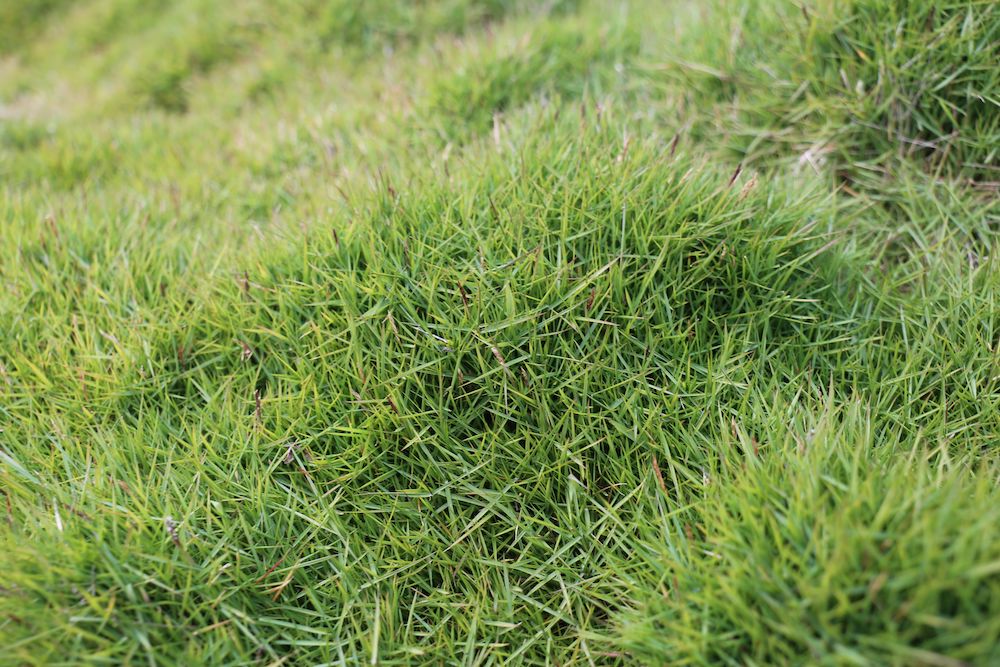
Calm-o-mile is a resilient and dense turf ideal for low-traffic areas. It’s a pollinator-attracting plant that’s actually able to withstand high foot traffic, so you can still walk over it every now and then.
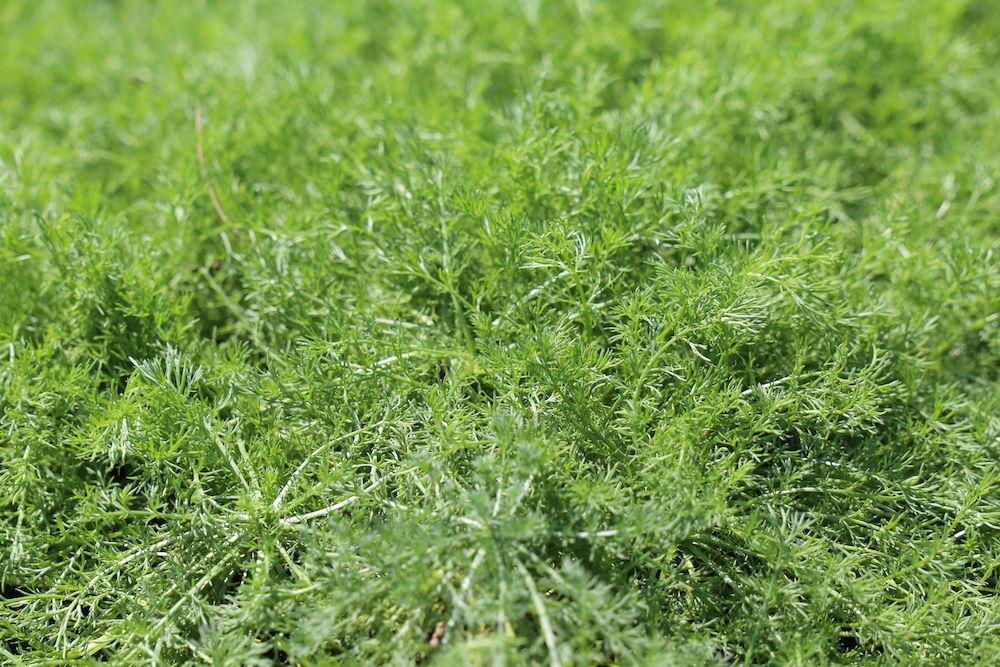
Before You Draw Your Designs
Before diving into a new backyard landscape design, it’s crucial to understand the current state of the garden. Look at factors such as soil type, exposure to sunlight, and existing vegetation.
These elements play a significant role in determining which plants and features will flourish in your backyard. Consider whether you’re enhancing the current layout or starting from scratch with a completely new design.
Determining the Soil Type
Identifying your soil type is essential for choosing the right plants. Different plants require different soil conditions and planting them in unsuitable soil can hinder their growth or even cause them to perish. You can identify your soil type by examining its colour, texture, and behaviour when wet.
For instance, sandy soil usually appears light in colour and feels gritty due to large soil particles, while clay soil is darker and sticky when wet, with tiny particles invisible to the naked eye. Silt particles fall somewhere between sand and clay, offering a dust-like consistency.
Most soils contain a mix of these three types of soil particles, with some organic material blended in as plant and animal matter decomposes. A good, balanced soil is called a “loam” and offers good drainage as well as moisture retention.
Sunlight Exposure
Understanding the sun’s trajectory across your backyard throughout the year is another vital consideration. Some plants need full sun to thrive, while others favour shade. In Australia, a northern-facing slope will receive more sun than a southern-facing slope because the equator lies to the north of the southern hemisphere.
The sun’s proximity to the southern hemisphere changes with the seasons, affecting the direction and amount of sunlight in your backyard throughout the year. By identifying the sunniest and shadiest areas in your backyard, you can select plants that will prosper under those conditions.
If you need to create more shade or increase sunlight, consider installing structures like pergolas, using tall plants and trees, or asking an arborist to trim tree branches. To boost sunlight, trim obstructive branches or incorporate reflective surfaces into your design to direct extra light where needed.
Complementing Your Home’s Architecture
Your backyard design should enhance the architecture of your home. For instance, a contemporary house may benefit from a minimalist landscape featuring sleek lines and geometric forms. Conversely, a traditional cottage-style house could be complemented by a vibrant garden filled with colourful flowers and rustic elements.
Balancing Proportions
Maintaining balance between your house, lawn, and plants can significantly enhance your yard’s appeal. Large trees or shrubs may overshadow a small house, while a large house may make small plants appear insignificant. Aim to select plants and features that harmonise with the size of your house and yard.
Incorporating Hardscaping
Hardscaping, the non-living constructed elements of a landscape such as patios, walkways, and retaining walls, can add structure and visual interest to your backyard. Consider using unconventional materials like recycled bricks or coloured concrete for an innovative touch.
Creating Inviting Pathways
A well-defined pathway makes your backyard more inviting and guides the eye through your garden. Line your pathway with vibrant flowers or intriguing lighting fixtures for added charm. Alternatively, winding pathways with hidden spaces can create a sense of mystery and exploration in your garden.
Integrating Edging
Edging can create a neat, finished look for your flower beds. There are numerous materials you can use for edging, including stone, metal, and wood. For a unique twist, consider using recycled items such as wine bottles or old tiles.
Next time your arborist trims a few dead branches from your trees, ask to have them left on-site so that you can lay them along garden edges.
Adding Colourful Features
Consider adding a pop of colour to your backyard with a brightly painted feature, such as a garden shed or a bench. This can draw the eye and make your backyard more memorable. Incorporating colourful flowers or shrubs around your seating area is another way to add interest to your entertaining space.
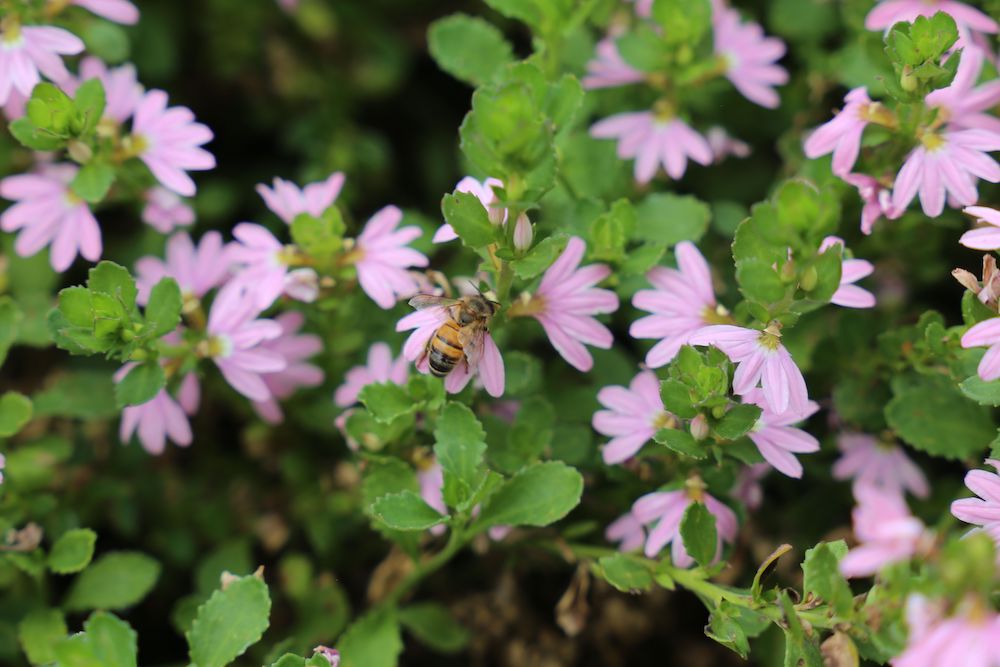
Designing Your Backyard Landscape with Maintenance in Mind
When planning your backyard landscape, it’s crucial to consider the level of maintenance you’re prepared to commit to. A stunningly landscaped backyard can quickly lose its appeal without regular upkeep.
Strappy plants such as lomandras may seldom need thinning or division over time, though once you prune them into a dome they need regular pruning to maintain the shape. Shrubs and hedges like westringias may require routine shaping and size control, and larger trees like maples often need professional arborists for safe and effective pruning.
Depending on the size of your backyard and the types of plants you have, you might need to install an irrigation system. When selecting an irrigation system, keep factors such as water efficiency and ease of use in mind.
Smart systems can use the internet to predict rainfall and adjust watering as required, reducing manual effort. Different plants have varying requirements. When grouping plants together in beds, choose those with similar moisture, nutrient, soil and sunlight requirements.
Time to Design Your Backyard Garden!
Now that you have a good understanding of the conditions in your backyard garden, and you know the type of design you’re trying to achieve, it’s time to start measuring and drawing. It’s all starting to come together now!
Measuring Spaces and Garden Beds
Before you start sketching your landscape design, it’s crucial to accurately measure your garden beds and spaces. Begin by taking a walk around your property with a tape measure, notepad, and pen in hand. Measure the length and width of each garden bed, lawn area, patio, or any other significant features.
Don’t forget to take into account the space required for pathways and access areas. Record these measurements carefully, noting down each dimension in its corresponding location on your notepad. This will assist you in creating a scaled drawing later on. By taking precise measurements, you can ensure your landscape design fits your space perfectly, preventing any costly or time-consuming adjustments down the line.
Sketching a Backyard Garden Design
Designing a garden on paper can be a fun and rewarding task. To start, gather the necessary tools – a ruler, pencil, eraser, and a large sheet of paper. Begin by sketching the boundaries of your garden to scale. This might include any existing structures like your house, shed, or fences. Next, draw in any immovable features such as trees, driveways, or pathways.
Then, using circles or ovals, represent areas for new plantings or features like a pond or patio. Be sure to consider the mature size of any plants you’re incorporating into your design. Use different symbols or colour codes to differentiate between various types of plants or features. Remember, this is a rough draft, so don’t worry about getting everything perfect.
The goal is to experiment with different layouts until you find one that suits your needs and preferences. Once you’re happy with your design, you can refine it and add in more details. If you feel that you need help with this part, there’s absolutely no shame in reaching out to an experienced garden designer or qualified landscape architect.
They’ve got knowledge and skills earned over their career working in other people’s gardens, which they can bring to your design.
Daniel’s Wrap
Designing a backyard landscape for relaxation and entertaining involves careful planning and selection of plants and features. By using plants to define spaces, incorporating seasonal plant choices, including edible plants, and understanding the benefits of turf, you can create a backyard oasis that serves your needs and enhances your lifestyle.
So, why wait? Start planning your own backyard oasis today. Designing a backyard landscape for relaxation and entertaining involves careful planning and consideration of various factors.
We’ve discussed the importance of understanding your yard’s potential by assessing the soil type, sunlight exposure, and existing vegetation. We also highlighted the significance of planning for maintenance, which includes regular pruning, efficient irrigation, fertilising, and pest control.
We explored aesthetic design aspects such as the power of colour and texture, and how different shapes can influence the perception of space. We emphasised the importance of choosing the right plants that will thrive in your specific conditions and touched on hardy plants suitable for various conditions.
With all these considerations in mind, you’re well-equipped to start planning your backyard landscape design. Now it’s time to bring out your creativity and let your backyard tell its own unique story. It’s time to take another look at your backyard, and then get designing!




This Post Has 0 Comments